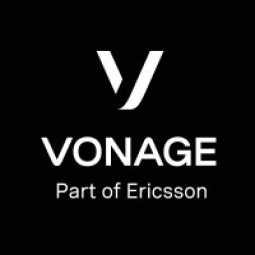下载PDF
Vaillant is Always in hot water (Thanks to Vonage)
技术
- 应用基础设施与中间件 - API 集成与管理
适用行业
- 电子产品
服务
- 系统集成
挑战
Vaillant Group 是一家领先的供暖和热水系统供应商,其现有的呼叫处理系统面临多项挑战。该公司每年接听超过 600,000 个来电,但其来电中继容量有限、与 Salesforce 的集成度低、通话记录存储量有限,并且需要手动拨打外拨电话。这些问题影响了其 122 个席位的联络中心的效率和客户服务质量。Vaillant 需要一种能够改进其呼叫处理系统并与现有 Salesforce CRM 无缝集成的解决方案。
关于客户
Vaillant 集团是一家知名公司,140 多年来一直致力于提供高效、创新且环保的供暖和热水系统。该公司以其前瞻性思维而闻名,其中包括对最新可再生技术的专业知识。Vaillant 每年在英国销售超过 400,000 台锅炉,并跻身超级品牌前 100 名。优质客户服务是 Vaillant 产品的核心,该公司每年有超过 600,000 个来电处理技术和客户服务查询,因此需要一个强大而高效的呼叫处理系统。
解决方案
Vaillant 向 Vonage 寻求解决方案,以应对其呼叫处理挑战。Vonage 在 Vaillant 的运营中实施了 Salesforce 联络中心。该解决方案将入站和出站呼叫直接链接到 CRM 数据库,为代理提供所有相关信息,并大大改善客户体验。该解决方案还包括无限的呼叫记录容量,将每个呼叫链接到客户记录,以实现合规性、培训和争议解决。此外,该解决方案还具有呼叫耳语功能,可在客户接通电话之前提醒代理呼叫目的。该系统操作简单,允许 Vaillant 进行系统更改,而无需依赖昂贵的顾问或供应商。Vonage 的出站拨号器的实施还通过自动拨打 250,000 个客户电话来确认预约的过程提高了效率。
运营影响
数量效益
相关案例.

Case Study
Remote Temperature Monitoring of Perishable Goods Saves Money
RMONI was facing temperature monitoring challenges in a cold chain business. A cold chain must be established and maintained to ensure goods have been properly refrigerated during every step of the process, making temperature monitoring a critical business function. Manual registration practice can be very costly, labor intensive and prone to mistakes.

Case Study
Cloud Solution for Energy Management Platform-Schneider Electric
Schneider Electric required a cloud solution for its energy management platform to manage high computational operations, which were essential for catering to client requirements. As the business involves storage and analysis of huge amounts of data, the company also needed a convenient and scalable storage solution to facilitate operations efficiently.

Case Study
Leveraging the IoT to Gain a Competitive Edge in International Competition
Many large manufacturers in and outside Japan are competing for larger market share in the same space, expecting a growing demand for projectors in the areas of entertainment, which requires glamor and strong visual performance as well as digital signage that can attract people’s attention. “It is becoming more and more difficult to differentiate ourselves with stand-alone hardware products,” says Kazuyuki Kitagawa, Director of Service & Support at Panasonic AVC Networks. “In order for Panasonic to grow market share and overall business, it is essential for us to develop solutions that deliver significant added value.” Panasonic believes projection failure and quality deterioration should never happen. This is what and has driven them to make their projectors IoT-enabled. More specifically, Panasonic has developed a system that collects data from projectors, visualizes detailed operational statuses, and predicts issues and address them before failure occurs. Their projectors are embedded with a variety of sensors that measure power supply, voltage, video input/ output signals, intake/exhaust air temperatures, cooling fan operations, and light bulb operating time. These sensors have been used to make the projector more intelligent, automatically suspending operation when the temperature rises excessively, and automatically switching light bulbs. Although this was a great first step, Panasonic projectors were still not equipped with any capability to send the data over a network.








